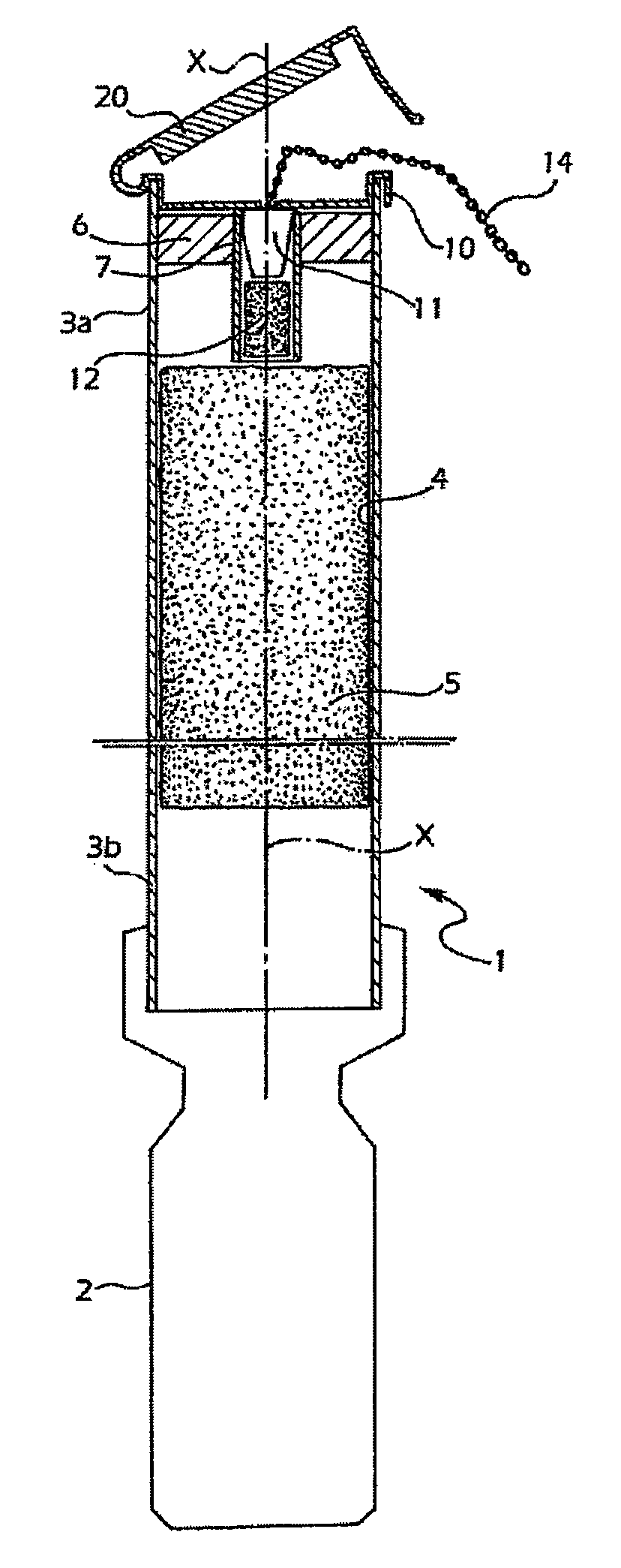Compositions, methods and devices for control and clean-up of hazardous spills
a technology for hazardous spills and compositions, applied in the direction of chemistry apparatus and processes, chemical/physical/physical-chemical processes, other chemical processes, etc., can solve the problems of high risk, high cost, and high cost of hydrogen fluoride compositions and methods, and achieve the effect of high capacity, substantial ability, and high capacity of preferred binding agents
- Summary
- Abstract
- Description
- Claims
- Application Information
AI Technical Summary
Benefits of technology
Problems solved by technology
Method used
Image
Examples
example 1
[0072]Approximately, 0.5 grams of Stockosorb M (acrylamide / potassium acrylate copolymer, cross-linked), commercially available from Degussa AG, of Krefeld, Germany, was placed into a perfluoroalkoxy (PFA) vessel fitted with a screen above the polymer, and evacuated. The PFA vessel was then weighed, and cooled to about −78° C. About 29 grams of anhydrous HF were distilled onto the polymer. The PFA vessel was warmed to room temperature and weighed. After about two hours, the PFA vessel was inverted and the excess HF drained into a second, evacuated PFA vessel. The HF-polymer gel remained on the filter screen in the first PFA vessel. The vessel containing the polymer gel was again weighed and the polymer found to have absorbed about 45.6 grams of HF per gram of polymer. This experiment was repeated several times and the average capacity was found to be about 45.2 grams of anhydrous HF per gram of polymer, which is reported in Table 1.
examples 2 ′ 4
Examples 2′ 4
[0073]The procedure in Example 1 was repeated for Examples 2′ 4, except that Stockosorb M was substituted for Stockosorb CW, FW, and SW, respectively. The results for each composition are reported in Table 1.
example 5
[0074]The procedure in example 1 was hard to perform with small particle sized polymers and had unacceptable scatter in the results, so a different approach was taken to characterize their capacity. Approximately 0.5 grams of Stockosorb CW was placed in a PFA vessel, connected to a vessel containing HF, and the system was evacuated. The valve of the HF container was opened and the polymer allowed to absorb HF vapor for two days. At the end of this period the polymer had adsorbed 37.62 grams of HF / gram of polymer. The experiment was repeated with fresh polymer which was allowed to absorb HF vapor for about 4 days. At the end of this period the polymer had adsorbed 40.90 grams of anhydrous HF per gram of polymer. The average of these two measurements is reported in Table 1. Although this technique is different than the approach described in example 1, it shows the polymer absorbs much more HF than previously reported systems.
PUM
| Property | Measurement | Unit |
|---|---|---|
| time | aaaaa | aaaaa |
| temperatures | aaaaa | aaaaa |
| temperatures | aaaaa | aaaaa |
Abstract
Description
Claims
Application Information
 Login to View More
Login to View More - R&D
- Intellectual Property
- Life Sciences
- Materials
- Tech Scout
- Unparalleled Data Quality
- Higher Quality Content
- 60% Fewer Hallucinations
Browse by: Latest US Patents, China's latest patents, Technical Efficacy Thesaurus, Application Domain, Technology Topic, Popular Technical Reports.
© 2025 PatSnap. All rights reserved.Legal|Privacy policy|Modern Slavery Act Transparency Statement|Sitemap|About US| Contact US: help@patsnap.com



